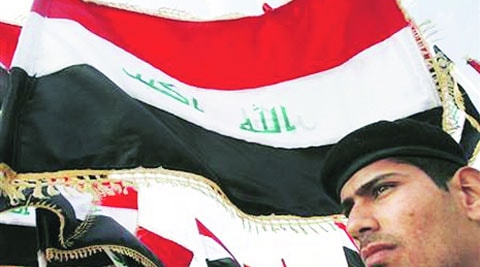Stay updated with the latest - Click here to follow us on Instagram
Iraq’s sectarian divide
The crisis in Iraq has exposed one of its oldest faultlines: the rift between the Sunnis and Shiites
 A pro-government march in Baghdad
A pro-government march in Baghdad
AD 632
The centuries-old split between the Shia and Sunni denominations dates back to the death of Prophet Muhammad and a dispute over who should succeed him as leader of the Muslims. One side, which became the Shiites, believed Muhammad’s successor should be someone from his bloodline. The other side, the Sunnis, held the successor could be a pious individual who could follow Muhammad’s customs. The rift has divided the Muslim landscape across the Middle East and beyond for 1,350 years. The large majority of the world’s Muslims are Sunni. Shiites are concentrated in Iran, southern Iraq and southern Lebanon, with significant communities in Saudi Arabia, Yemen, Syria, Afghanistan, Pakistan and India.
1916
The uneasy borders dividing the Middle East were set during World War I, when the French and English divided the lands of the defeated Ottoman Empire with little regard for religious or ethnic differences. Britain imposed a Hashemite monarchy on Iraq and defined its territorial limits. During the British occupation, the Shiites and Kurds fought for independence. Through wars and upheaval, the national borders the British drew have pretty much held, largely by the force of autocratic rulers. Sunnis have since then controlled Iraqi politics, often brutally. Although Faisal I of Iraq was legitimised and proclaimed King by a plebiscite in 1921, independence was achieved in 1932, when the British Mandate officially ended.
2011
A return to factional warfare has been feared ever since US troops pulled out after nearly nine years in Iraq. Americans urged Prime Minister Nouri al-Maliki to craft a government that would share power between Shiites, Sunnis and Kurds and heal the national wounds. It didn’t work out. Sunnis complain they are excluded, imprisoned and abused by al-Maliki’s Shiite-dominated government. Kurds have focused on building up their oil-rich autonomous enclave in northern Iraq. In February 2011, the Arab Spring protests also spread to Iraq. The Iraqi National Movement, reportedly representing Sunnis, boycotted Parliament in late 2011 and early 2012, claiming the Shiite-dominated government was sidelining Sunnis.
2013
The situation began deteriorating rapidly. Following the withdrawal of US troops in December 2011, instead of engaging in post-war recovery, Iraq has been plunging deeper into inter-ethnic violence, prompted by ever-growing tensions mostly between the majority Shiites and the Sunni minority. 2013 saw the situation aggravate to its worst, with almost daily deaths. Sunni protesters took to the streets, al-Qaeda-inspired militants stepped up their attacks, and fighting from Syria’s civil war spilled over the border into Iraq. Maliki spoke late October 2013 of how drastic the situation in the country has become. “Iraq has become subjected to a war of genocide by terrorists,” Maliki said.
- 01
- 02
- 03
- 04
- 05































